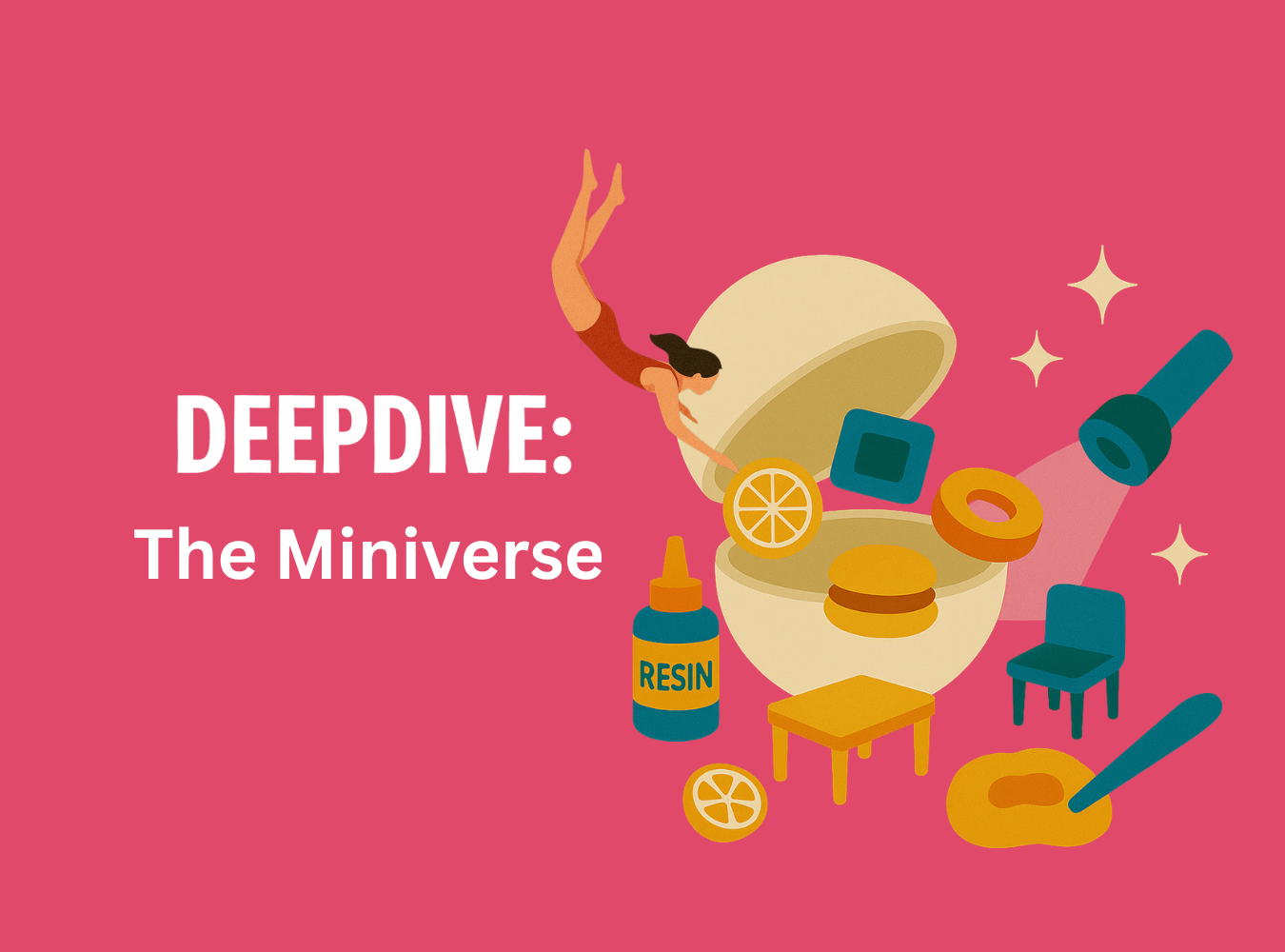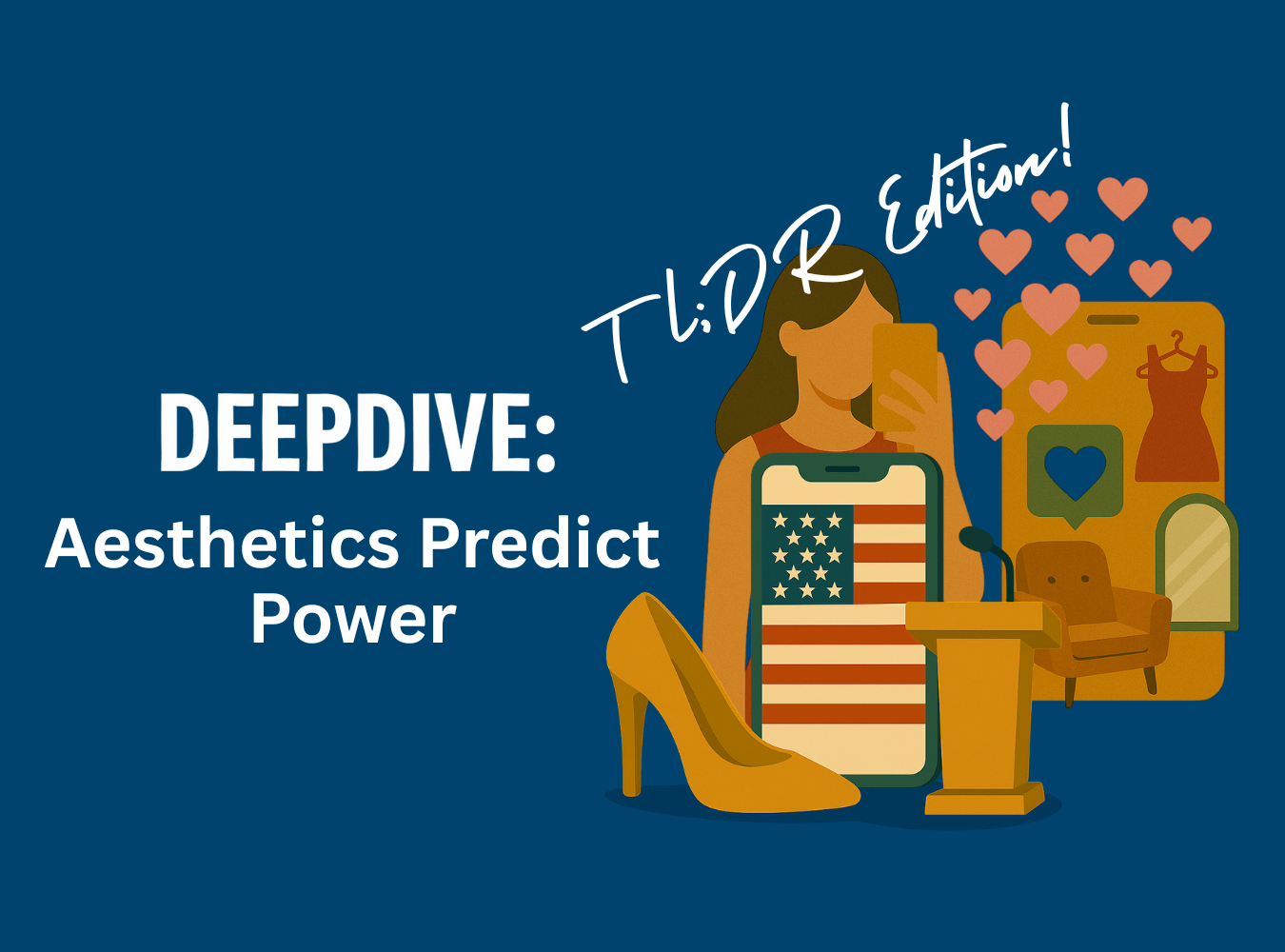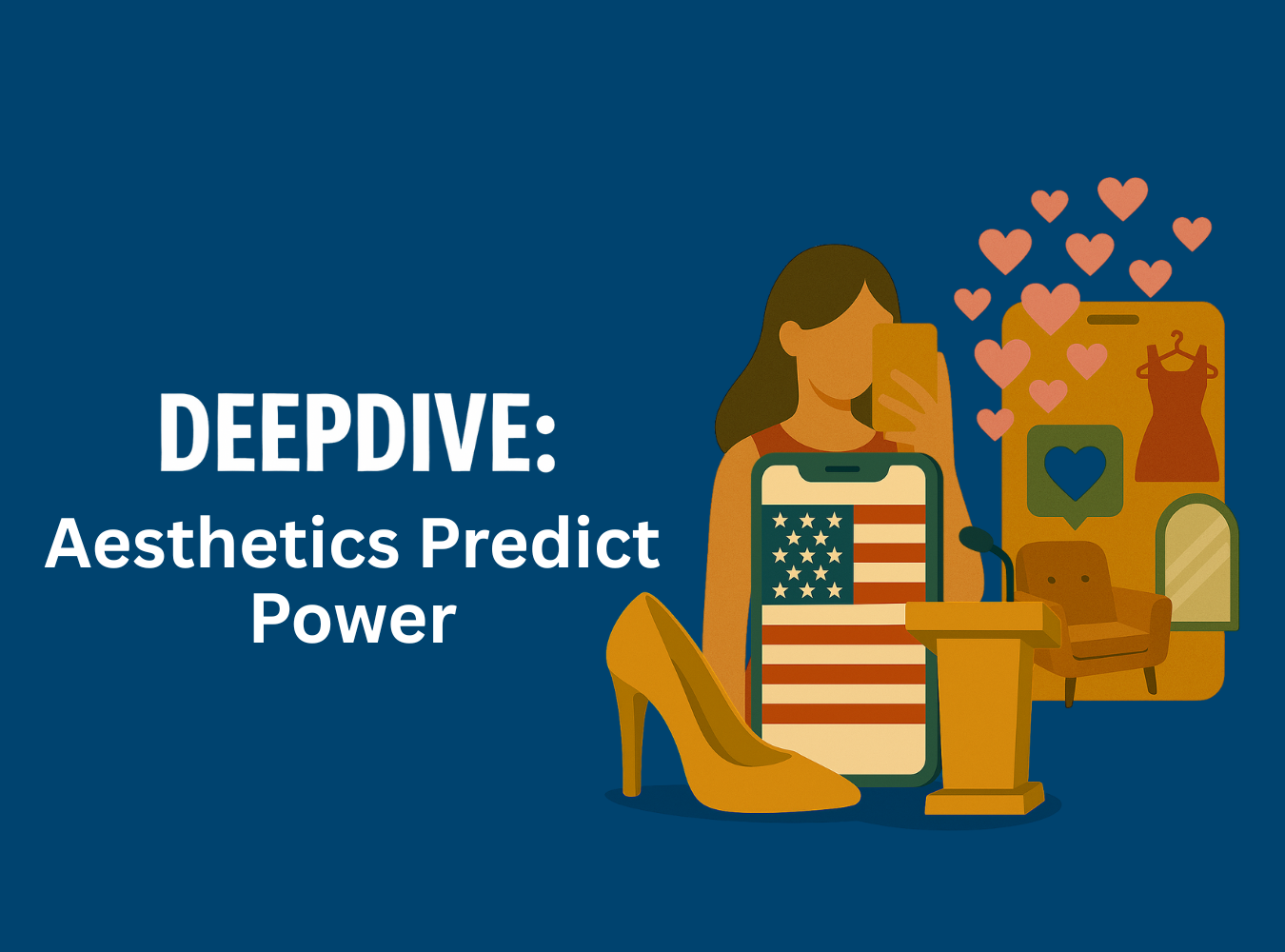Miniatures, Major Reach: How MGA’s Miniverse Captured TikTok, Cross‑Generational Fans, and the Unboxing Economy.
How a niche DIY collectible line became a “kidult” favorite through influencer strategy, surprise packaging, and viral unboxing content.
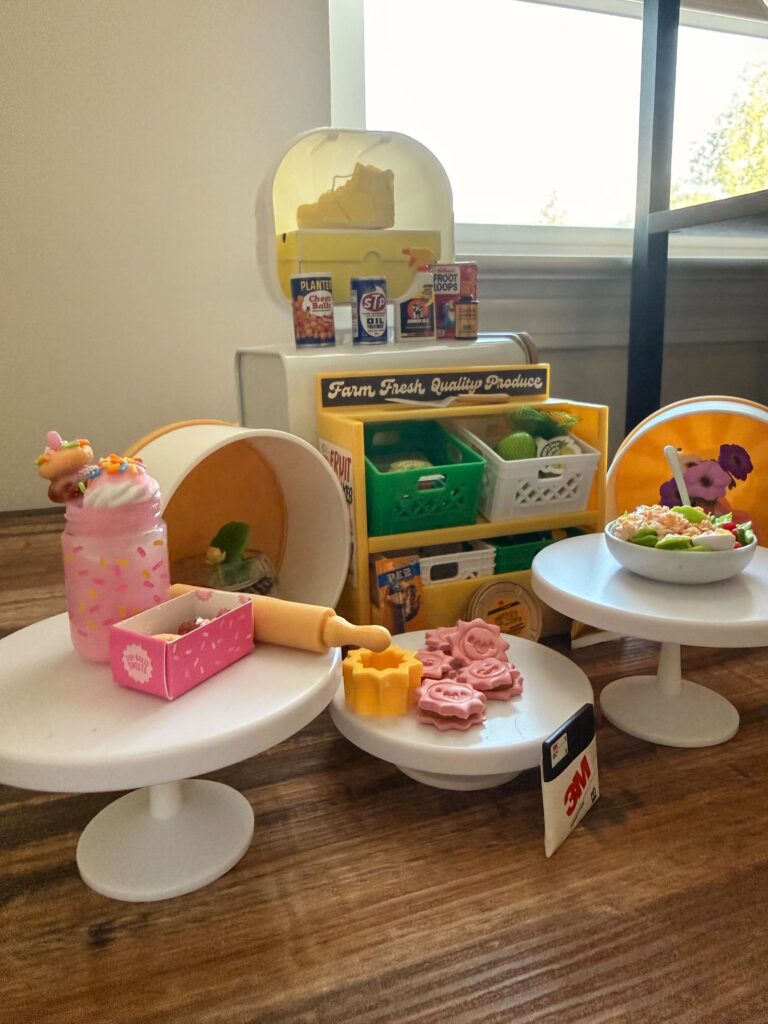
My collection (so far!)
I bought my MGA Miniverse first blind ball about four months ago on a whim. I had seen the influencer content all over my FYP and didn’t really “get it” — but I couldn’t stop watching. It felt a bit like brain rot with extra steps. Then one day, at Target, I was walking down the aisle and saw the rows and rows of these plastic balls. It was only $10, so I said screw it, and grabbed one called Miniverse Diner Edition.
Inside was what turned out to be a salad with hard-boiled eggs and tuna to go on top, along with a bottle of resin “dressing” that I wasn’t sure what to do with, considering I didn’t have a UV light. I put the salad into the provided bowl, used the tiny plastic tweezers to place my eggs and tuna, poured the resin dressing on top, and pushed the miniature fork into the side. I set it in the sun on my desk as the instructions said, hoping it would still work.
To my surprise, it did. Over the next hour or so, the resin hardened into a glossy finish. It was oddly satisfying — not just the act of assembling, but watching it slowly come together. That one little salad turned out to be more than just a toy; it was a kind of creative ritual. And in that moment, I finally got the appeal. Currently, my modest collection sits at six, with two more unbuilt. It’s fun, silly, cheap, and sometimes challenging enough to be really interesting. And after you finish building one and admiring your work, you are excited to build another because it is satisfying.
So when you walk down the toy aisles at Target, you may find shelves filled with big cardboard display boxes holding rows of the same colorful opaque and themed capsules that grabbed me that day. That is the Miniverse. Or Make It Mini. Or Mini Brands. It can be hard to tell the difference between them. Some are shrunk-down versions of well-known brands; others contain complex models with resin (like my Diner ball), which you must build to enjoy. This is the environment Miniverse entered and quickly dominated.
Miniverse is a DIY collectible toy line launched by MGA Entertainment that lets users assemble tiny food and drink items using miniature molds, UV resin, and real-time curing. Each set is packaged as a blind capsule, making the unboxing and surprise reveal part of the core experience. Released in 2023, Miniverse quickly became a viral sensation on TikTok, where creators showcased the build process, the curing effect, and their finished mini meals with millions of views.
Its rapid rise wasn’t accidental. Miniverse is a strong case study in how modern toy brands can engineer virality, community, and cross-demographic appeal. It’s not just about fun packaging — it’s about designing for platforms, tapping into collector culture, and making performance central to the product itself. In this deep dive, I’ll trace how Miniverse rose on social media, how it appeals across generations, and how blind boxes / unboxing content acts as a strategic lever.
The Rise of Miniatures in Popular Culture
Miniatures have fascinated people for centuries — from 17th-century European dollhouses to handcrafted model railroads and architectural dioramas. Miniatures used to be a hobby reserved for major enthusiasts, with sets being painted under a magnifying glass and placed carefully into a hand-built model with tweezers. They were a specialty item you ordered from specific retailers with stores or websites that looked straight out of a grandmother’s house in the 80s. The hobby never really “jumped” to the mainstream until recently. Commercially, that fascination evolved through brands like Re‑ment, founded in 1998 in Japan, which sold serialized miniature food, furniture, and dollhouse items, often in blind-pack formats. In the 2010s, miniature culture intersected with digital trends, particularly through ZURU’s Mini Brands, which launched in 2019 and introduced blind capsules filled with miniature versions of real-world consumer goods. But it wasn’t until MGA’s Miniverse launched in 2023 that the category became fully optimized for the social content era — combining the visual appeal of miniatures, the suspense of blind boxes, and the DIY customization that fuels TikTok, Instagram, and YouTube Shorts ecosystems.
The mini trend then sparked high-profile retail collaborations. Target partnered with MGA on a limited-edition Miniverse capsule built entirely around the Target shopping experience, complete with tiny red baskets, miniature carts, faux bags, and branded accessories. Released as a store exclusive, the Target ball quickly became a coveted collectible, showing how retailers can turn mini culture into shelf space, storytelling, and cultural cachet. Major film franchises like Harry Potter, Beetlejuice, and Jurassic Park have followed with sets pulled straight from the screen.
By 2025, the craze had jumped beyond the toy aisle. McDonald’s introduced a Mini Happy Meal collection featuring shrunken burgers, fries, and drink cups, clearly inspired by Miniverse’s viral success. The promotion tapped into both nostalgia and scarcity, and within weeks, sets were reselling for multiples of their original price on Facebook Marketplace and eBay. What began as a niche fandom had become a mass-market phenomenon, with miniaturization itself transformed into social currency.
@miniverseaddict I usually wear (and recommend) gloves when using UV resin but I was so excited I FORGOT 🤓 I’m so excited for the entire @Miniverse Make It Mini Treats series 🥹 the ring pops were begging to be first 😆 #miniverse #makeitmini #miniversecreator
♬ What’s New Scooby-Doo? – Simple Plan
What’s Happening — Miniverse’s Rise on TikTok & Influencer Ecosystem
TikTok at the Core
- Miniverse has leaned into a TikTok-first approach. According to Axies Digital, MGA adopted a “TikTok-only” strategy starting in mid-2023, tapping into the “miniatures / mini-food” niche and helping the brand find traction among fans documenting their creations.
- That niche community of users who enjoy crafting and showing off tiny food, drink, or DIY sets has been fertile ground. Miniature food fits perfectly in 15‑ to 60‑second visual, ASMR, and “satisfying build” content formats.
- The brand has earned massive reach with over 4+ billion cumulative views under #Miniverse on TikTok alone
Influencer & Creator Partnerships
- Miniverse doesn’t just rely on organic content — it actively collaborates with creators. For example, foodie influencer Kate Norkeliunas, known for her comedic food commentary, partnered with Miniverse to showcase a “Make It Mini From Scratch” kit, reframing it in her own humorous tone.
- Axies Digital notes that MGA has worked with nearly five dozen influencers across its campaign lifecycle.
- They also run stunts like limited-edition drops (e.g., sugar spaghetti kits themed after Elf) and TikTok-exclusive competitions to keep engagement high.
- What’s especially notable is that Miniverse helped catalyze a new genre of micro-creators who now specialize in “mini content.” TikTok and Instagram have seen a wave of accounts emerge that exclusively unbox, assemble, and showcase Miniverse kits — often combining ASMR, stop-motion, and satisfying edits. These creators aren’t just influencers promoting a toy — they are building personal brands around miniature content. This evolution positions MGA not just as a marketer but as a platform-native ecosystem builder.
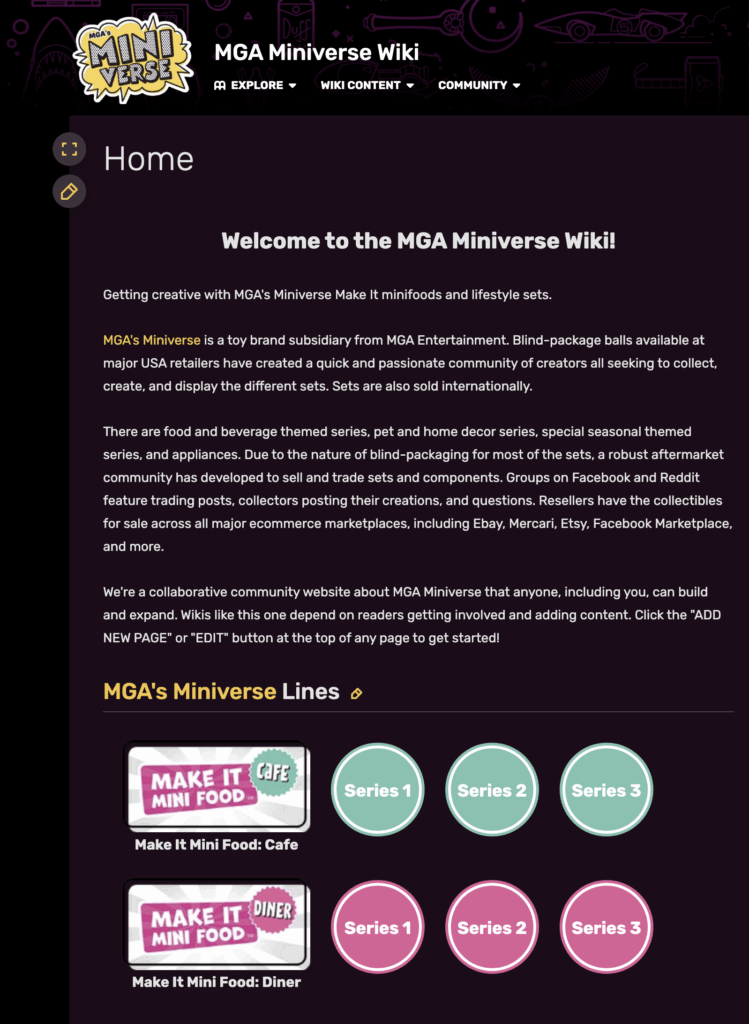
Cross‑Generation Appeal: Kidults, Hobbyists & Nostalgia
One of Miniverse’s standout characteristics is its ability to appeal to both children and older audiences who appreciate craft, collectibility, or miniaturism culture.
- “Kidult” framing: MGA strategically markets Miniverse to a hybrid audience — the toy-savvy child and the nostalgic, craft-inclined adult.
- Accessible price point: Most Miniverse capsules retail around $10 USD, making them easy impulse purchases for kids and adults alike. This low barrier to entry encourages experimentation, collecting, and repeat buying, especially compared to more premium collectible lines.
- Creative ownership & customization: The DIY element gives users a sense of accomplishment and uniqueness — key for older users who value creative expression.
- Display appeal: These aren’t toys to stash away — many users display finished miniatures on shelves, desks, or as part of décor setups.
- Trend synergy: The “mini” aesthetic intersects with broader TikTok trends — from mini cooking and mini brands to ASMR packaging and collectibles.
Blind Boxes, Unboxing Content & Reality Shows
Another popular brand this may remind you of is Labubu, which Pop Mart has grown into a global sensation by leaning on blind boxes, rare figures, and resale hype that resonate with adult collectors and hobbyists. Miniverse takes a different approach, emphasizing participation through TikTok ads, influencer collaborations, and even a platform-exclusive reality competition inviting fans to build and showcase their miniature worlds. Together, they illustrate how “mini culture” connects across generations—whether through the chase for rarity or the joy of creative play.
Episode 1 of Bitesize on the MGA YouTube channel.
The Mechanics of Surprise
Unboxing and blind box mechanics are central to Miniverse’s success. Here’s why:
- Built-in suspense: Each capsule is a mystery, encouraging content creation around the “reveal.”
- Collection incentive: Consumers often buy multiples to “complete” a set, which means more unboxing content, more product movement, and longer interest cycles.
- Visual appeal: Because the items are tiny and detailed, the reveal often includes a “cute/satisfying” moment perfect for short-form video.
- Influencer-ready: Content creators naturally gravitate toward unboxing — it drives engagement and often becomes episodic content.
- UGC loop: The more people post, the more discoverable the brand becomes — without paid amplification.
Collector Behavior & Community Tactics (via Reddit)
A passionate collector base has emerged, and Reddit’s r/miniverse_makeitmini subreddit offers a window into how fans engage beyond just content. Users regularly share:
- Tips for “reading” the capsules (e.g., inspecting symbols or batch codes) to guess what kit is inside
- Photos of full display case purchases, often bought in bulk to increase the odds of completing an entire set
- Information on exclusive or hard-to-find kits, like a botanical set found only at Costco Canada
- Trading, displaying, or repurposing kits into custom creations
This behavior shows that Miniverse isn’t just a toy — it’s become a collector-driven hobby economy. MGA’s blind box mechanic isn’t merely a gimmick; it’s a catalyst for community-led tactics, fan-to-fan collaboration, and a growing sense of exclusivity.
Backlash & Recalls
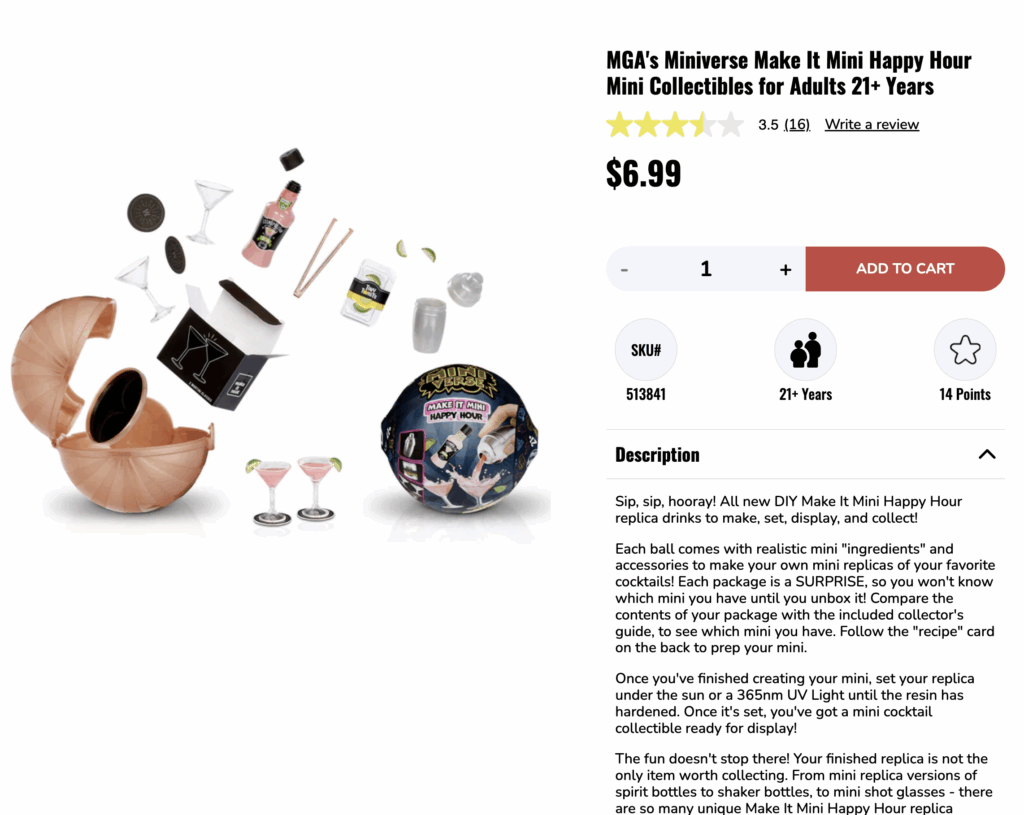
Mini Happy Hour returned to their site with a 21+ label
The “Happy Hour” Backlash
In 2023, MGA faced public scrutiny over its Miniverse Make It Mini: Happy Hour collection — a line of miniature cocktails and bar accessories. Advocacy groups, including Fairplay for Kids, Center for Science in the Public Interest, and Truth Initiative, issued a public call for major retailers like Target, Walmart, and Amazon to pull the toys from shelves. The core concern: alcohol-themed toys targeting children could normalize drinking and undermine public health messaging. The kits, sold alongside more traditional toy sets, included items like tiny martini glasses, ice buckets, and labeled alcohol bottles — all within MGA’s broader collectible packaging.
In response to the criticism, MGA temporarily removed the Happy Hour line from its own website and reframed the product positioning to emphasize collectibility and the 21+ intended audience. While the controversy triggered negative press and some consumer concern, the brand weathered the moment largely by adjusting visibility and maintaining strong engagement in other product lines. The issue highlighted the fine line brands must walk when crafting kidult crossovers — what’s quirky and fun for older audiences may not be appropriate for mass-market toy aisles.
July 2024 Resin Recall
In July 2024, MGA was hit with another reputational challenge: a major recall of over 1.2 million Miniverse Make It Mini sets in the U.S. (and more than 21 million globally). The recall, issued in coordination with the U.S. Consumer Product Safety Commission (CPSC), cited risks of chemical burns and respiratory irritation linked to the included UV-curing resin used in the kits.
According to the CPSC, over 30 injury reports were filed, including cases of skin burns, eye irritation, and respiratory issues. MGA responded by issuing a voluntary recall, offering customers a free return kit and safer replacement resin, and pledging to reformulate future kits to meet higher safety standards. The incident sparked renewed scrutiny around chemical-based DIY toys and underscored the importance of rigorous safety testing, especially when products are designed for cross-generational or at-home use.
Brand & Marketing Implications
Miniverse offers a blueprint for social-first, collectible-driven products. Key takeaways for marketers:
- Design for content, not just utility
Ensure packaging, aesthetics, and UX all encourage sharing and filming. - Creator alignment over control
Partner with niche creators and let them interpret the brand authentically. - Build for multiple generations
Think beyond core demos. Miniverse resonates with kids, teens, and adult collectors alike. - Controversy management matters
MGA acted quickly in response to criticism — removing controversial lines while maintaining momentum elsewhere. - Strategize seasonal and limited drops
Staggered releases (e.g., holiday-themed kits or film tie-ins) keep buzz alive and encourage repeat content. - Support fan ecosystems and collector culture
Fans will organize, decode, and distribute content if given the right mechanics and incentives — turning passive buyers into proactive communities.
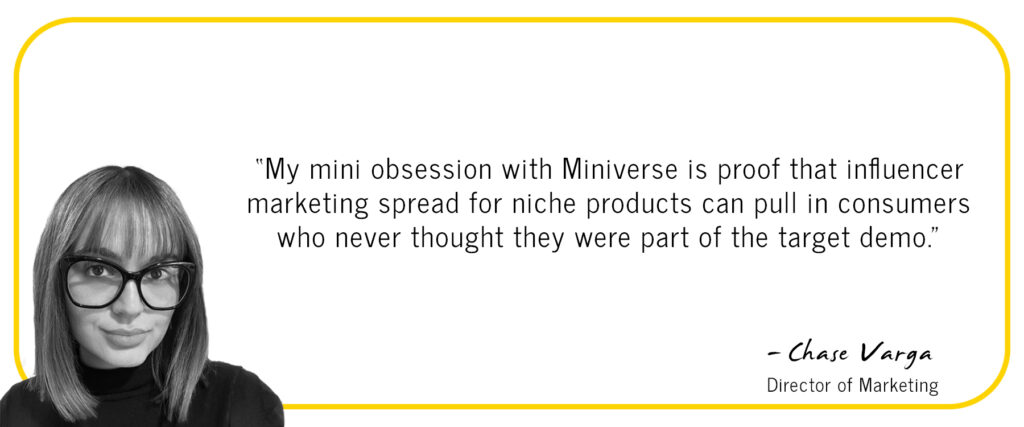
Key Takeaways for Marketers
- Unboxing & blind packaging = built-in content loops
- Cross-generational appeal is a growth lever — but requires careful design and messaging
- Controversy can challenge brand trust — be proactive with risk-aware product planning
- TikTok virality stems from native behavior, not repurposed ads — lean into platform cultures
- Microinfluencers and niche creators drive depth and trust — not just reach
- Gamified collecting fosters long-term community and purchase behavior
Final Thought
Miniverse isn’t just a viral toy. It’s a mirror of how digital-native products succeed in today’s culture. It blends surprise, creativity, social sharing, and just enough chaos to make you want to return for more. Whether you’re a marketer, a collector, or just a curious shopper walking past the toy aisle, it’s worth asking: Are you building something people want to watch or something they want to do?

